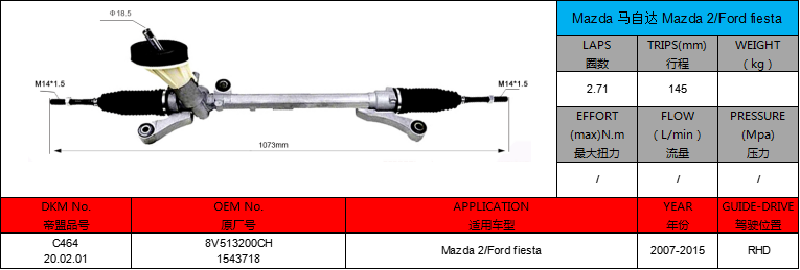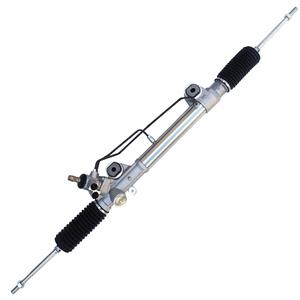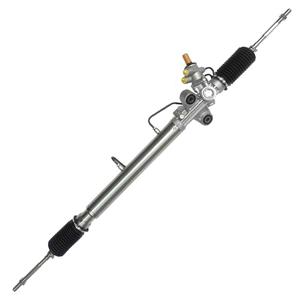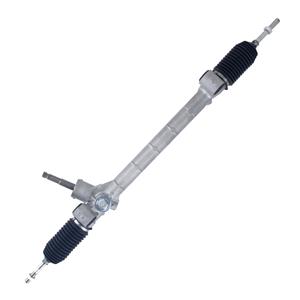When did American cars start to be equipped with power steering?
Power steering is an important configuration in modern cars, which makes driving easier and more comfortable. Especially in low-speed driving, parking or when frequent steering is required, power steering can greatly reduce the operating force required by the driver. With the development of the automobile industry, power steering has gradually become a standard feature of vehicles. However, this technology did not exist at the beginning, but gradually became popular with the technological progress of the automobile industry.
So, when did American cars start to be equipped with power steering? This article will explore this issue in detail, from the birth and development of power steering to its application in the American automobile industry.

What is the background of the birth of power steering?
In the early 20th century, cars had just entered the mass market, and the design of cars was still relatively simple. Drivers relied entirely on manual operation to control various parts of the vehicle, and the steering system was no exception. At that time, cars used a mechanical steering system, also known as a "manual steering system." This system did not have any power assistance, and the driver directly controlled the steering of the wheels through the steering wheel, which was reasonable for early small cars. But as cars grew in size and weight, especially in larger cars and trucks, drivers had to expend more effort to turn the vehicle, especially when parking or driving at low speeds.
To address this problem, engineers began looking for ways to reduce the steering burden on drivers. Some early power steering technologies began to appear as early as the 1920s, but the technology at the time was not yet available for large-scale use. The real breakthrough came after World War II, when hydraulic technology was significantly improved and laid the foundation for the widespread use of power steering systems.
In what year was power steering first used?
When discussing when American cars began to be equipped with power steering systems, two key events must be mentioned: the first was a technological breakthrough, and the second was the first use of mass-produced cars.
Although the concept of power steering systems was proposed in the 1920s, its actual use did not begin until the late 1940s and early 1950s. The first brand to achieve large-scale use of power steering systems was Chrysler. In 1951, Chrysler took the lead in introducing hydraulic power steering systems in its high-end Imperial series. This marked the first large-scale commercial application of power steering technology.
During this period, the core of the power steering system was the hydraulic power steering system, which provided steering assistance through an engine-driven hydraulic pump, allowing the driver to turn the vehicle without effort at low speed or when parking. This technology was considered a luxury configuration at the time and was mainly used in high-end models. However, its success quickly attracted the attention of other automakers and promoted the popularization of power steering technology throughout the industry.

GM's Contribution and Popularization
Although Chrysler was the first company to launch the power steering system, General Motors (GM) was undoubtedly an important force in promoting the popularization of this technology. GM was the largest automaker in the United States in the mid-20th century, with several well-known brands such as Cadillac, Buick and Chevrolet.
In 1952, GM officially launched the hydraulic power steering system on its luxury brand Cadillac models. This system was called the "Hydra-Matic" power steering system and quickly won the favor of the market. As a high-end luxury car brand at the time, Cadillac had a wide influence. GM pushed the power steering system to a wider market through the success of this brand.
Also in 1952, Buick's Roadmaster and Super series models began to be equipped with power steering systems, marking the gradual penetration of this technology from luxury cars to more popular models. Power steering systems are no longer exclusive to high-end models, but have become a standard option for more and more vehicles.
When did American cars begin to be equipped with power steering?
Since the power steering system was first used in American cars in the 1950s, this technology has quickly become popular. Before that, steering was an operation that required a lot of physical effort, especially in large cars or at low speeds, the driver needed to turn the steering wheel hard to turn the wheels. The hydraulic power steering system provides hydraulic pressure through the power pump, making the driver's steering operation easy.
With the widespread application of power steering technology, the driving experience has greatly improved. From the late 1950s to the 1960s, more and more American automakers began to equip their models with power steering systems. During this period, power steering gradually evolved from an optional configuration for luxury models to a standard configuration for mid-to-high-end models, and finally became a standard configuration for almost all models in the late 1970s.
1. Standard configuration of luxury cars: Initially, power steering systems were mainly used in the luxury car market, such as Cadillac, Lincoln and other brands. Since power steering systems increase production costs, they are more commonly used in high-end models. These luxury models have improved driving comfort and enhanced market competitiveness through power steering systems.
2. Gradually equipped with mid-to-high-end models: With the advancement of technology and the reduction of production costs, power steering systems have gradually penetrated from the luxury car market to mid-to-high-end models. In the 1960s, brands such as Buick and Pontiac began to equip their mid-to-high-end models with this system, and power steering was no longer exclusive to luxury cars.
3. Popularization in the mass market: By the 1970s, the technology of power steering systems had become very mature, and production costs had further decreased. Mainstream automakers such as GM, Ford and Chrysler gradually began to standardize power steering systems on their mass-market models. With the popularization of this technology, manual steering systems gradually faded out of the market, replaced by more convenient and safe power steering systems.

Technological improvements in power steering systems
The power steering system introduced in the 1950s mainly relies on a hydraulic power-assist system, which uses a hydraulic pump and hydraulic oil to provide power for steering operations. However, the hydraulic power steering system is not perfect. It relies on the power provided by the engine, so the power-assist effect will be weakened when the engine speed is low (such as when parking or driving at low speed). In addition, the hydraulic system requires regular maintenance and replacement of hydraulic oil, and the hydraulic hoses and pumps in the system are also prone to failure.
In order to improve these problems, automakers began to continuously optimize the design of power steering systems. In the 1980s and 1990s, the Electric Power Steering system (EPS) began to gradually replace the traditional hydraulic power steering system. Unlike the hydraulic system, the electric power steering system relies on an electric motor to provide power assistance, without the need for hydraulic oil and hydraulic pumps. This not only reduces the maintenance requirements of the vehicle, but also improves fuel efficiency, because the electric power steering system only works when power assistance is needed, while the hydraulic system works continuously after the engine is started.
What impact does power steering have on the US automotive industry?
The introduction and popularization of the power steering system has had a profound impact on the US automotive industry. First, it greatly improves the driving experience, especially in congested sections of big cities or narrow streets, where drivers can control the vehicle more easily. Second, power steering technology improves the safety of the car, especially when emergency steering is required, the driver can react more quickly to avoid accidents.
In addition, the popularity of power steering systems has also promoted the innovation of automakers in other comfort and safety technologies. As consumers' requirements for vehicle comfort and handling performance continue to increase, automakers have begun to increase their investment in technology research and development, promoting the development of technologies such as automatic transmissions and brake assist systems.




